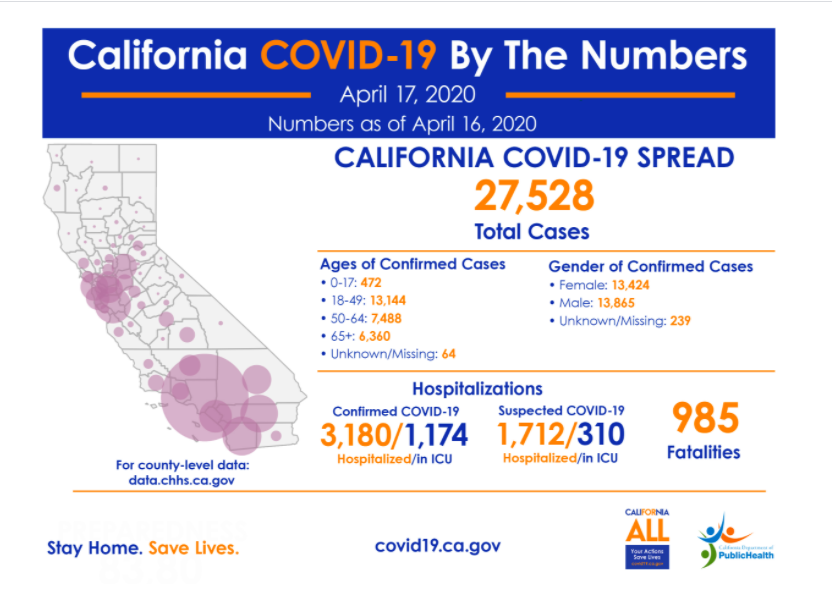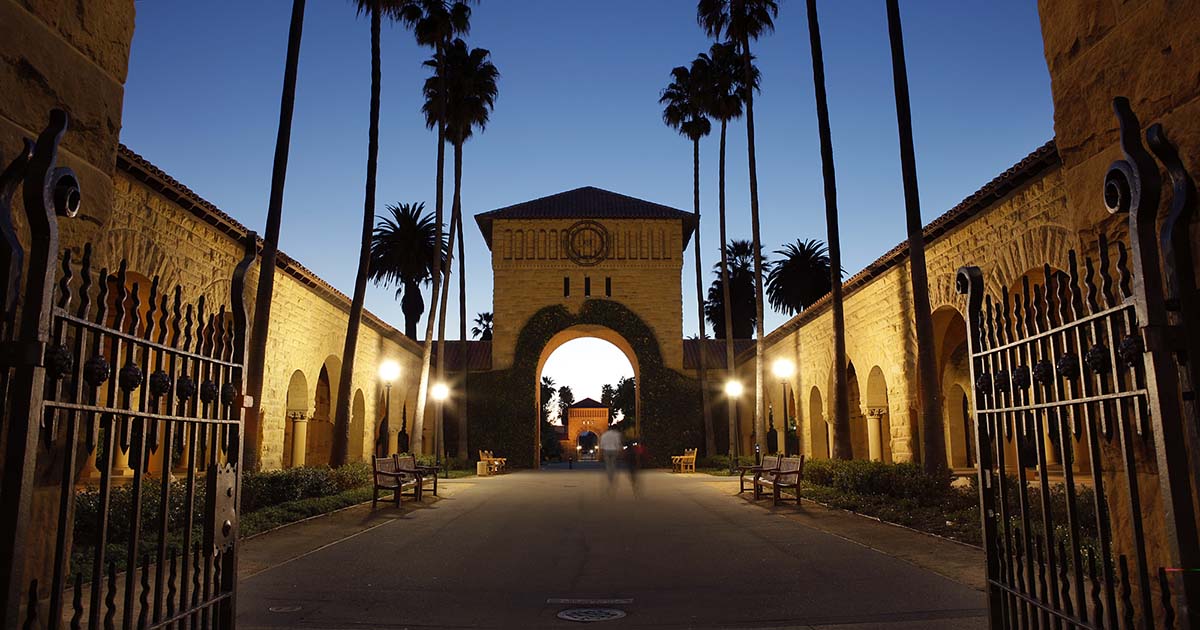
Coronavirus. (Photo: Center for Disease Control)
Stanford University Random Sampling Test Shows Coronavirus More Widespread and Less Deadly Than ‘Experts’ Claimed
It turns out the ‘experts’ were wrong
By Katy Grimes, April 17, 2020 5:16 pm
Imagine if the nation was ruled by a dictatorship of doctors.
It turns out the “experts” from Imperial College were wrong in their early computer model of the coronavirus. Imperial College originally predicted that more than 500,000 people could die in the U.K., and two million or more could die in the U.S.
Stanford University scientists just conducted a coronavirus antibody test, which tested 3,330 people, concluded that the infection is both more common than previously thought and possesses a lower fatality rate than what current data suggest.
Sacramento radio talk show host Phil Cowan and I have been calling for a random sampling test for over a month now. While we are glad it’s finally done, it sure could have saved a lot of jobs, businesses and heartache had it been done early on.
“While it appears that we are dealing with a nasty virus clearly dangerous to older age groups and people in densely populated cities, the same politicians who have fanatically shut down cities, counties and entire states are committed to and continue to ramp up fear so that citizens will accept their extreme orders as necessary,” California Globe reported April 6th.
“Dr. Jay Bhattacharya, one of the contributors to the study, wrote an opinion article in March questioning the models showing that millions of people in the United States would die from the virus and pointed out that more testing is needed to determine the fatality rate,” the Times reported.
“Fear of Covid-19 is based on its high estimated case fatality rate — 2% to 4% of people with confirmed Covid-19 have died, according to the World Health Organization and others,” he wrote in the Wall Street Journal. “So if 100 million Americans ultimately get the disease, two million to four million could die. We believe that estimate is deeply flawed. The true fatality rate is the portion of those infected who die, not the deaths from identified positive cases.”
As the Globe said April 6th, Many physicians are now saying the lockdown and social distancing orders are preventing herd immunity, and will drag out the course of the virus. “Stanford biophysicist and Nobel laureate Michael Levitt said this week, ‘The real situation is not as nearly as terrible as they make it out to be,’” Daily Wire reported. “Last week, Levitt emphasized: ‘[Y]ou need to think of corona like a severe flu. It is four to eight times as strong as a common flu, and yet, most people will remain healthy and humanity will survive.’”
“Governor Newsom could talk to biophysicist Michael Levitt at Stanford, just down the highway from the State Capitol, but Levitt would poke gaping holes in the governor’s scare tactics. Most people don’t fear the virus as much as they fear this indeterminate sentence.”
Meanwhile, California is still in police-enforced lockdown.
- Steve Hilton Show: Newsom Proposes Tax Credits for Hollywood, Shirks Other Industries - October 30, 2024
- How to Kill a State in 5 Easy Steps: Gavin Newsom’s California - October 29, 2024
- Gov. Newsom Gifts Tax Breaks to La La Land, Betting on the Losers - October 28, 2024






The Stanford study did not use random sampling. The study identifies limitations, which indicate the study did not use a random sample.
https://www.medrxiv.org/content/10.1101/2020.04.14.20062463v1.full.pdf
“This study had several limitations. First, our sampling strategy selected for members of Santa Clara
County with access to Facebook and a car to attend drive-through testing sites. This resulted in an overrepresentation of white women between the ages of 19 and 64, and an under-representation of Hispanic
and Asian populations, relative to our community. Those imbalances were partly addressed by weighting
our sample population by zip code, race, and sex to match the county. We did not account for age
imbalance in our sample, and could not ascertain representativeness of SARS-CoV-2 antibodies in
homeless populations. Other biases, such as bias favoring individuals in good health capable of attending
our testing sites, or bias favoring those with prior COVID-like illnesses seeking antibody confirmation are
also possible. The overall effect of such biases is hard to ascertain”.
It isn’t the only study done…studies done in L.A. and NY show the same.
I’M NOT CAPITULATING
A rhinoceros suddenly appears in a small town, tramping through its peaceful streets. Soon there are two, then three, until the “movement” is universal: a transformation of average citizens into beasts, as they learn to “move with the times.”
https://www.goodreads.com/book/show/323823.Rhinoceros_and_Other_Plays
Love this! In addition to the good message you’ve sent, Ionesco is my favorite absurdist playwright. Appreciate your post.
During this time I was traveling Heavily between Palo Alto & Fresno, I became sick and was out for 7 days, felt like a train hit me, what helped me the most was using the steam room at the gym. My 1st time in their I felt like I was suffocating, but A older Korean lady told me it would pass and to fight it. We’re in this together, as a community, and as united ???????? people!
I have a son who traveled extensively as a younger man…..he’s now 34……including in West Africa, Angola, South Africa, Portugal, Puerto Rico, Brazil and more. He has friends all over the world as he mostly stayed with locals when traveling. He states that the malaria drug (and I’m not certain he means hydroxychloroquine….maybe there was another one at the time?) is a highly mind-altering drug that induces what he calls “craziness” and makes people almost go insane, similar to what LSD does? Is this true? He states he has watched friends go through this and it is horrible.
There are a bunch of different drugs used to treat and prevent malaria. It sounds like you’re son was talking about mefloquine hydrochloride, which can sometimes cause severe psychiatric side effects. Most people now use atovaquone-proguanil, which has fewer side effects.
Margaret: Or, maybe your son was getting high when he was traveling.
A lot of anti malarials have weird effects. My sister took them when she worked in Belize, and a number of her co-workers would get vivid nightmares from them. But at least they didn’t get malaria.
But remember, anti-malarials do nothing for COVID-19
The reason that this COVID-19 spreads wider than alL others are due to its’ Incubation Time is 5 DAYS! During that 5 days befroe the symptons are known to the patient, the patiens had spread that Virus for 5 days!o spread it! And ef3y ohhe infected also had 5 days to spread….. down the LINE….